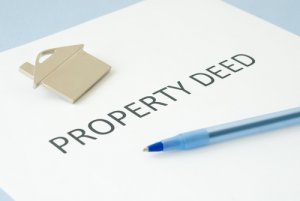In 2018, 5.34 million existing homes were sold in the U.S. according to the National Association of Realtors. That means more than 5 million people felt the relief of seeing a sold sign in their front yard.
If you’ve never sold a house before, the process is more complicated than you might think. You’ll need to find a realtor, fix up the landscaping, and double check your property lines.
You might be asking, how do I find my property lines?
Read on to learn how to find boundary lines and why they’re important when you’re trying to sell your house fast.
Why You Need to Know the Location of Your Property Lines
 A property line marks the boundary of the land you legally own. A few feet might not make a difference to you or your neighbor, but it can become a legal issue when you sell your house.
A property line marks the boundary of the land you legally own. A few feet might not make a difference to you or your neighbor, but it can become a legal issue when you sell your house.
For example, say your fence is built outside of your property line and sits on your neighbor’s land. When you list your home, you might not be able to include the fence in the listing since it’s not on your property.
That’s why it’s a good idea to be proactive and learn where your property lines are before you sell your house.
Property line issues can lead to disputes with neighbors. If a neighbor or the potential buyer of your home presses the issue, you could end up losing the buyer.
A lot of mortgage lenders require a survey of the property lines. Your potential buyer could back out of purchasing your house if the surveyor finds a problem. You can prevent surprises like this one by knowing your property boundaries beforehand.
How Do I Find My Property Lines? 4 Ways
First of all, don’t assume you know where your property boundaries are. Property lots aren’t necessarily the same size or shape. The boundaries don’t always follow straight lines either.
If you’re not sure about the location of your property lines or the size of your lot, there are four ways to find out.
1. Look at Your Property Deed
 A property deed is a legal document that shows the transfer of ownership. When you bought your home, you probably got a copy of the property deed.
A property deed is a legal document that shows the transfer of ownership. When you bought your home, you probably got a copy of the property deed.
The deed will give a legal description of the lot. The lot size is described in words rather than with a map, so it might be difficult to decode.
If you can’t find your property deed, you can get a copy from your County Clerk or Assessor’s office.
2. Check Your Property Survey
When you originally bought your home, your paperwork probably included a surveyor’s map of your property. This map will show the dimensions and property lines of your lot.
The dimensions will have a point of beginning or common point. This is the location where the surveyor started measuring. You can start at this point and walk the lines of your property.
If you don’t have a survey map, you can contact your County Clerk or Assessor.
3. Visit Your Local Assessor’s Website
Some county or city assessor’s offices have digital maps available on their websites. These maps are called plat maps and they document the real estate plots that are in your area.
The easiest way to find these maps online is by searching for your county’s GIS map in a search engine. Look at the search results and click on the website for your city or county.
Find your street address on the map and look for boundary lines. The map will show the dimensions of your lot. It will also show the location of your plot in relation to landmarks like telephone poles.
4. Contact Your Local Assessor’s Office
If your local office doesn’t have online records, you can visit in person. Master plat maps might be available in hard copy form or on microfilm or microfiche.
You may have to pay a small fee (a few dollars) to get your own copy.
How to Mark Your Boundary Lines
After you’ve found where your property lines are located, you should mark them. This can be useful for your own reference and for your realtor.
You can mark the lot by using a tape measure and yard stakes. Look at the plat map or the legal description on your deed, and mark the corners of your lot with stakes.
Then, you can use a string to connect the corners. This is important because plots don’t necessarily follow straight lines.
If you’re not a trained surveyor, plat maps and legal descriptions of plots can be tough to understand. To get the most accurate property lines, you should hire a surveyor to do an official lot survey.
The average cost of a boundary survey is between $100 and $600, but it depends on your location. The surveyor’s measurements can be added to public records for future reference.
What If There’s a Problem with Your Property Lines?
Be aware that you might find issues with your property line. When you’re selling your house fast, it’s wise to hire a lawyer if you run into a major problem.
For example, if your garage is built on your neighbor’s lot, that could spell trouble for a potential buyer. Before you sell your house, hire a lawyer to resolve the issue legally. In the worst case scenario, you might have to buy part of your neighbor’s lot.
Try to handle property line issues before you put your house on the market. It will make for a smoother selling process.
Next Steps for Selling Your Home
Selling your home can be a stressful process that comes with a ton of questions. Luckily, how do I find my property lines is one question you can cross off the list.
If you’re looking for a painless way to sell your home quickly, contact us today for more information.


